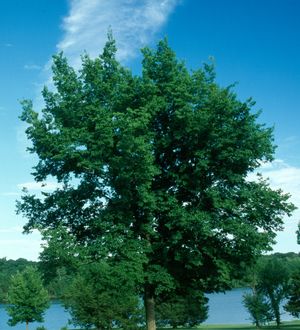Celtis laevigata
Sugarberry
Sugarberry is a common large overstory tree in bottomland forests but also occurs in drier areas over calcareous rock with relatively high pH soil.
The leaves are normally easily identified by their almost triangular shape with uneven bases with three prominent veins and usually few teeth. The small fruits (technically a drupe) are sweet, but barely edible.
The similar Common Hackberry (C. occidentalis) has broader, coarsely toothed leaves that are sandpapery above.
Additional Information:
Height
60-80 Feet
|
 |
Spread
60-80 Feet
|
USDA Hardiness Zone 5-8
Home Owner Growing and Maintenance Tips:
Fall color is a modest yellow.
Characteristics & Attributes
Hydrologic Designation
|
Season of Interest
| • |
Late (July-frost) |
| • |
Mid (May-June) |
|
Soil Moisture
|
Special Features
|
Sun Exposure
|
USFS MO Ecological Map
|
Wildlife Benefit
| • |
Cover |
| • |
Nesting |
| • |
Food/Birds |
|
Printed from www.CritSite.com. Copyright CritSite . 16245 S. 71 Highway, Belton, MO 64012 (816) 331-9738.

